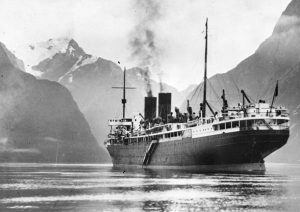The Wildlife Of Milford Sound
Milford Sound and Fiordland were well known to the Maori. Many Maori legends relate to its formation, including the demi-god Tuterakiwhanoa, who is said to have carved the rugged landscape from formless rock.
The Maori named Milford Sound 'Piopiotahi' after a thrush-like bird, the piopio. Piopiotahi literally means a single piopio, which harks back to the legend of Maui trying to win immortality for mankind. When Maui died in the attempt, a piopio was said to have flown to Milford Sound in mourning.
The name Milford Sound was first given to the sound by Captain John Grono in 1812. He and his crew were the first Europeans to visit the area. He named it after Milford Haven in Wales. Following Cook's mapping of the sound, sealers and whalers formed the first European settlements there.
Historic Highlights of Milford Sound Area
- Donald Sutherland and John Mackay find Mackay and Sutherland Falls in 1880.
- Discovery of the McKinnon Pass in 1888, which later becomes part of the Milford Track.
- William H. Homer and George Barber discover the Homer Saddle in 1889. Homer suggests that a tunnel through the saddle could provide access to Milford.
- Homer Tunnel provides road access to Milford Sound in 1954 (almost 20 years since engineering work on the tunnel began).
- The Milford Track is dubbed 'The finest walk in the world' by poet Blanche Baughan, in The London Spectator in 1908.
You can find out more about Milford Sound's history during commentary from your guides on coaches, boats and planes on Milford Sound tours.
Nature-lovers are in for a real treat when they tour Milford Sound with Milford Sound Select.
This beautiful fiord is to be found in the south west of New Zealand's South Island, within Fiordland National Park and the Te Wahipounamu World Heritage site. In this area of exceptional beauty, you can see landscapes of snow-capped mountains, rivers of ice, deep lakes, dense rainforests and grasslands. Animals and plants, once found on the ancient supercontinent of Gondwana still exist in this area.
Our drivers are passionate about the local flora and fauna, they have years of knowledge and experience working in the unique world heritage area.
Highlights of Milford Sound' natural habitat
On your day tour to Milford Sound with Milford Sound Select, you will see many natural wonders from the road, during the cruise from the boat, and for those taking the flying option, from the air.
These may include:
Diverse flora and fauna with over 700 plants found only in Fiordland.
Forests of Red Beech (nothofagus fusca), Silver Beech (nothofagus menziesii) and Mountain Beech nothofagus solandri).
Low-lying podocarp Fiordland forests with species of Rimu, Miro andTotara flourishing amongst shrubs, ferns, tree ferns and epiphytes.
Home to numerous New Zealand bird species including Takahe, Pukeko, Kakapo, Mohua and Kea
Breeding habitats for Shags, Sooty Shearwater, Oyster Catchers and gulls.
Three species of dolphins these are Bottlenose Dolphins, Dusky Dolphins and Hectors Dolphins.
New Zealand Fur Seals (arctocephalus forsteri) are usually seen on Milford Sound Select cruises.
Two species of penguins, the Fiordland Crested Penguin (eudptyes pachyrhynchus) and the Little Blue Penguin (eudyptula minor). The Fiordland Created Penguin is among the rarest in the world.
Join us for a day exploring natural treasures of Milford Sound with Milford Sound Select.








